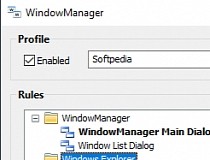
Legacy size that Display#getSize reportsįinal Size legacySize = new Size(bounds. android:windowSoftInputMode'stateVisible'.
Int insetsHeight = insets.top + insets.bottom To show the input method when your activity starts, add the android:windowSoftInputMode attribute to theInt insetsWidth = insets.right + insets.left Insets insets = windowInsets.getInsetsIgnoreVisibility(()
#Windowmanager margin touch update#
"The absolute width of the display in pixels."Įxample: Log.d("ApplicationTagName", "Display width in px is " + metrics.widthPixels) ĪPI level 30 update final WindowMetrics metrics = windowManager.getCurrentWindowMetrics() įinal WindowInsets windowInsets = metrics.getWindowInsets() We can use widthPixels to get information for:
#Windowmanager margin touch windows 7#
Many programs don't remember their position and size between sessions and even Windows Explorer does not restore windows to their last position under Windows 7 or higher. GetWindowManager().getDefaultDisplay().getMetrics(metrics) WindowManager helps you to improve your work flow by remembering and restoring the position and size of your programs and windows. Window Manager to receive this column every Monday, free via e-mail. To access the DisplayMetrics members, initialize an object like this: DisplayMetrics metrics = new DisplayMetrics() This shows the last date that you touched a file, and whether or not you saved. Int height = display.getHeight() // deprecatedįor the use case, you're describing, however, a margin/padding in the layout seems more appropriate.Ī structure describing general information about a display, such as its size, density, and font scaling. Int width = display.getWidth() // deprecated If you are in a fragment and want to acomplish this just use Activity.WindowManager (in Xamarin.Android) or getActivity().getWindowManager() (in java).īefore getSize was introduced (in API level 13), you could use the getWidth and getHeight methods that are now deprecated: Display display = getWindowManager().getDefaultDisplay() manager.updateViewLayout(this, getLayoutParams()) That way, you can move the view with the touch event. Return the touch region for the current IME window, or an empty region if there is none. 1 Answer Sorted by: 0 You should use a floating view. WindowManager manager (WindowManager) getContext().getSystemService(Context.WINDOWSERVICE) // Update the view layout afterwards.

If you're not in an Activity you can get the default Display via WINDOW_SERVICE: WindowManager wm = (WindowManager) context.getSystemService(Context.WINDOW_SERVICE) ĭisplay display = wm.getDefaultDisplay() The interface that apps use to talk to the window manager. If you want the display dimensions in pixels you can use getSize: Display display = getWindowManager().getDefaultDisplay()


 0 kommentar(er)
0 kommentar(er)
